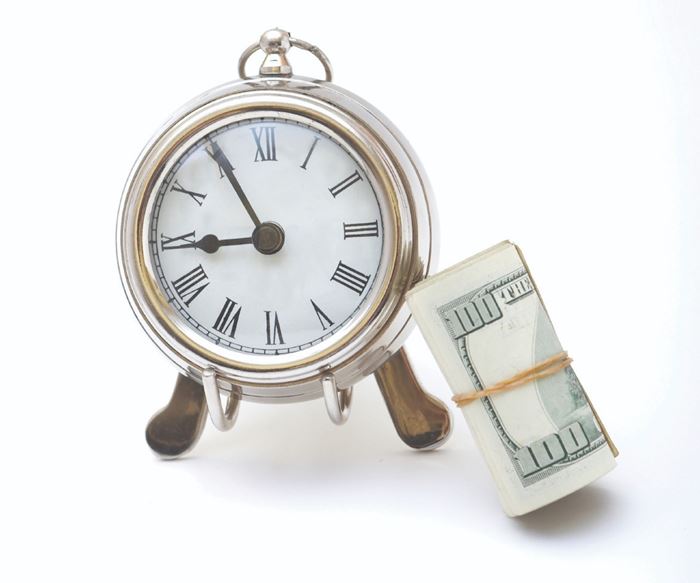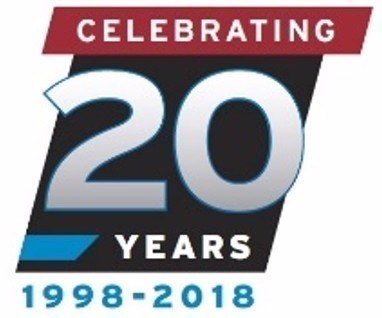The Bottom Line: Taxation of Mold Builders: 1998 vs. 2018
Tax laws are much more favorable for mold shops today than they were 20 years ago.
As MoldMaking Technology celebrates 20 years in print, it is fun looking back on the changes in tax laws that affect mold shops. A comparison between the tax laws that were on the books in 1998 and the tax laws in effect today reveal that most of the changes have been beneficial.
Tax Rates and Alternative Minimum Tax
Overall, tax rates have gone down. In 1998, corporate tax rates were graduated, topping out at 35 percent. The Tax Cuts and Jobs Act of 2017 (TCJA) recently changed the corporate tax rate, lowering it to 21 percent.
Individual tax rates have decreased as well. Many mold shops are organized and taxed as partnerships, S corporations or sole proprietorships. These companies pass through the income to the owners, who pay the income tax based on their share of the income, deductions and credits. In 1998, the top individual rate was 39.6 percent and applied to taxable income exceeding $278,450 for both married couples filing a joint return and single individuals.
The top individual rate dipped in the early 2000s, but the top rate crept back up to 39.6 percent until Congress passed the TCJA in December 2017. The TCJA lowered the top individual tax rate to 37 percent and applied to taxable income exceeding $600,000 of married couples filing a joint return and $500,000 for single taxpayers.
The R&D Tax Credit
Mold builders’ most used tax incentive has changed significantly in the last 20 years, and those changes have been almost entirely favorable for mold shops. In fact, very few mold shops were claiming the R&D credit in 1998 compared to today. In 2015, the AMBA conducted a non-scientific survey reporting that 46 percent of members participating were claiming the R&D tax credit. This percentage has surely increased with the elimination of the Alternative Minimum Tax (AMT) hurdle for shops under $50 million in sales.
Mold builders’ most used tax incentive has changed significantly in the last 20 years, and those changes have been almost entirely favorable for mold shops.
In 1998, new treasury regulations introduced the “discovery test” as a means of defining qualified research. This onerous test meant that mold shops had to be expanding, exceeding or refining the knowledge of a skilled professional in their field. Wow, what a standard! Many companies that claimed the credit in the late 1990s had to either obtain a patent or show how they were a pioneer, doing things that their peers were not.
This is not so today. Proposed regulations that were proposed in December 2001 eliminated the discovery test. The regulations added the elimination of design uncertainty as a qualifying activity, paving the way for most mold builders to claim the credit.
In December 2006, Congress introduced the Alternative Simplified Credit (ASC), which provided taxpayers with a simplified method of computing their Credit for Increasing Research Activities. Prior to the introduction of the ASC, taxpayers that were performing research from 1984–1988 had to document qualified expenditures from that period to claim the credit. By introducing the ASC eased the documentation for many mold shops, because the ASC only requires shops to document their research expenditures for the prior three tax years.
In 2014, the U.S. Treasury finalized regulations that allowed companies to include the cost of their prototypes and pilot models as eligible expenditures, regardless of whether the resulting prototype or pilot model was sold to a customer or used in the mold shop’s business. With this change, tool shops can now claim the cost of labor and materials paid or incurred up to the elimination of design uncertainty.
In 2015, the Protecting Americans from Tax Hikes Act (PATH Act) made the R&D tax credit permanent, thereby removing the annual or biennial act of renewing the credit, often retroactively. As noted above, the PATH Act also allows for eligible small businesses (those with less than $50 million in gross receipts) to offset the AMT.
In 2017, the TCJA indirectly increased the amount of the credit. Now, taxpayers claiming the R&D tax credit must either reduce their expenditures by the amount of the credit or elect a reduced credit that is equal to the gross credit multiplied by the inverse of the top corporate tax rate. Therefore, taxpayers claiming a $100,000 gross credit who elect the reduced credit will now receive a $79,000 credit [$100,000 x (100% - 21%)] rather than a $65,000 credit [$100,000 x (100% - 35%)].
It’s not all good news with respect to mold shops’ research activities, however.
It’s not all good news with respect to mold shops’ research activities, however. The TCJA introduced a new provision that will require taxpayers to capitalize their research expenditures and amortize them over a five-year period. This provision becomes effective in 2022 unless Congress changes the law before then.
Capital Expenditures
The last 20 years have seen a drastic improvement in the way that mold shops account for the tax treatment of their buildings and equipment. In 1998, bonus depreciation did not exist. The Job Creation and Worker Assistance Act of 2002 originally enacted bonus depreciation, enabling a 30-percent bonus depreciation for property that is placed in service on 9/11/2001 and for three years thereafter. Since then, bonus depreciation has been a main-stay of the Internal Revenue Code, with bonus depreciation percentages ranging from 30–100 percent. Under today’s law, taxpayers are allowed 100-percent bonus depreciation on eligible assets that are placed in service after September 27, 2017 and before January 1, 2023, with the bonus depreciation scheduled to phase-down beginning in tax year 2023.
Section 179, the election to expense certain depreciable business assets, has also changed drastically since 1998. Section 179 allows mold shops to write off certain assets, such as equipment, in the year that the asset is placed in service, up to a specified limit. In 1998, this expensing limit was $18,500, with the benefit being phased-out once the mold shop places over $200,000 of eligible property in service.
Thanks to the TCJA passed in December, however, the Section 179 limit has increased to $1,000,000 and begins to phase-out once a mold shop places over $2,500,000 of eligible assets in service.
Moreover, taxpayers won a significant victory in the summer of 1997 with respect to how they account for their capital purchases in Hospital Corp. of America, et al v. Commissioner. This landmark case allows for taxpayers to segregate the costs of real and personal property. Therefore, 1998 saw a number of taxpayers analyzing their buildings and assets to determine which assets could be segregated into shorter depreciable lives. Cost-segregation studies are still alive and well today, and many mold shops use these studies as support to accelerate their depreciation deductions.
Personal Goodwill
In 1998, personal goodwill was a relatively new concept. It marked the year of Martin Ice Cream v. the Commissioner, the landmark case that acknowledged the existence and accounting treatment of personal goodwill. The concept of personal goodwill drastically changed how C Corporations and some S Corporations treated the sale of their assets. The concept still applies today, with additional court cases supporting the concept.
Export Incentives
Today, many mold shops rely upon an Interest Charge – Domestic International Sales Corporation (IC-DISC) to reduce the income tax liabilities that are associated with their export income on property manufactured in the United States. While the IC-DISC was available in 1998, the ordinary income tax rates and the qualified dividend rates were the same. Therefore, the incentive was not as beneficial because the tax savings were temporary, unlike the permanent tax savings the IC-DISC may generate in today’s environment. While the lower tax rates of the TCJA reduced its benefit, permanent tax savings are still available to those that qualify.
Further, the TCJA introduced a code section that essentially creates a new, lower tax rate on income derived from foreign markets. This new deduction may help mold shops reduce the overall income tax liabilities that are associated with their exports. While this benefit has flown under the radar, guidance is forthcoming from the U.S. Treasury to help explain it.
While this benefit has flown under the radar, guidance is forthcoming from the U.S. Treasury to help explain the new code section.
The Bottom Line
So, what is the bottom line? The tax laws are much more favorable for mold shops today than they were 20 years ago. While tax reform was a significant windfall for most mold shops, the tax law has become incrementally more favorable over the last two decades.
About the Contributor
Michael J. Devereux II, CPA, CMP
Michael J. Devereux II, CPA, CMP is a partner and director of Manufacturing, Distribution and Plastics Industry Services at Mueller Prost.
Get Social and Be a Part of the 20th Anniversary Coverage with
#MMTMag20 on
Twitter, LinkedIn and Facebook.
Related Content
The Role of Social Media in Manufacturing
Charles Daniels CFO of Wepco Plastics shares insights on the role of social media in manufacturing, how to improve the “business” side of a small mold shop and continually developing culture.
Read MoreMMT Chats: Solving Schedule and Capacity Challenges With ERP
For this MMT Chat, my guests hail from Omega Tool of Menomonee Falls, Wisconsin, who share their journey with using enterprise resource planning (ERP)—and their people—to solve their schedule and capacity load monitoring challenges.
Read MoreMold Building Stats Improve Performance
Mold manufacturing is a numbers game rooted in measurement and data tracking to continuously improve.
Read MoreHow to Improve Your Current Efficiency Rate
An alternative approach to taking on more EDM-intensive work when technology and personnel investment is not an option.
Read MoreRead Next
How MoldMaking Technology Magazine Came to Be
Twenty years ago a moldmaker launched this magazine, legitimizing an industry and then passed it on to a passionate media company, which took it to the next level.
Read MoreHow to Use Strategic Planning Tools, Data to Manage the Human Side of Business
Q&A with Marion Wells, MMT EAB member and founder of Human Asset Management.
Read MoreOvercoming Pain Points in Moldmaking with AI
Shops that embrace AI as a tool, not a threat, can enhance efficiency, preserve expertise, and attract tech-savvy talent.
Read More























